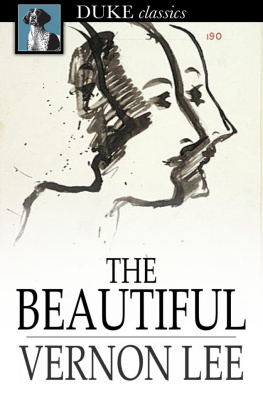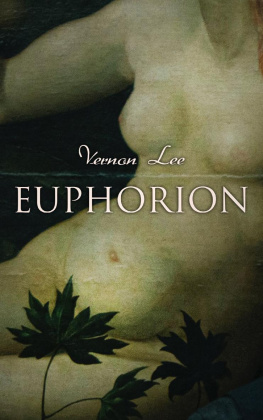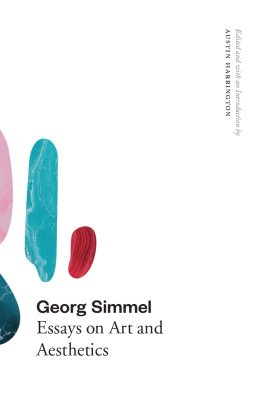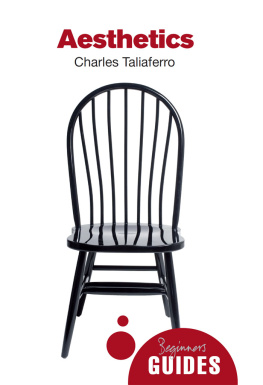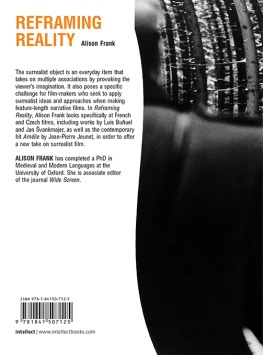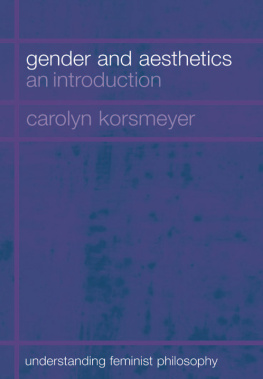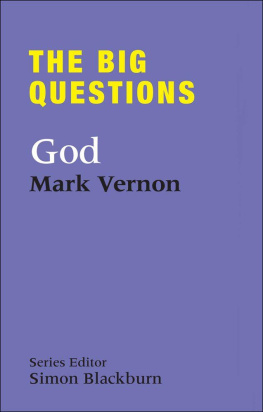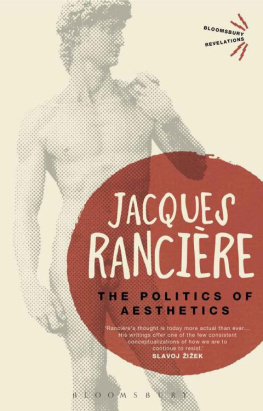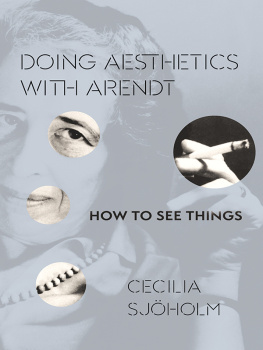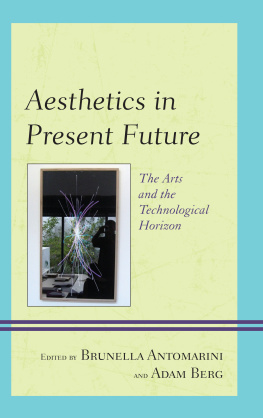THE BEAUTIFUL
AN INTRODUCTION TO PSYCHOLOGICAL AESTHETICS
* * *
VERNON LEE
*
The Beautiful
An Introduction to Psychological Aesthetics
First published in 1913
ISBN 978-1-62011-037-9
Duke Classics
2012 Duke Classics and its licensors. All rights reserved.
While every effort has been used to ensure the accuracy and reliability of the information contained in this edition, Duke Classics does not assume liability or responsibility for any errors or omissions in this book. Duke Classics does not accept responsibility for loss suffered as a result of reliance upon the accuracy or currency of information contained in this book.
Contents
*
Preface and Apology
*
I HAVE tried in this little volume to explain aesthetic preference,particularly as regards visible shapes, by the facts of mental science.But my explanation is addressed to readers in whom I have no rightto expect a previous knowledge of psychology, particularly in itsmore modern developments. I have therefore based my explanationof the problems of aesthetics as much as possible upon mental factsfamiliar, or at all events easily intelligible, to the lay reader. Nowmental facts thus available are by no means the elementaryprocesses with which analytical and, especially experimental,psychology has dealings. They are, on the contrary, the everyday,superficial and often extremely confused views which practical lifeand its wholly unscientific vocabulary present of those ascertainedor hypothetical scientific facts. I have indeed endeavoured (forinstance in the analysis of perception as distinguished fromsensation) to impart some rudiments of psychology in the course ofmy aesthetical explanation, and I have avoided, as much as possible,misleading the reader about such fearful complexes and cruxes asmemory, association and imagination. But I have been obligedto speak in terms intelligible to the lay reader, and I am fully awarethat these terms correspond only very approximately to what is, or atpresent passes as, psychological fact. I would therefore beg thepsychologist (to whom I offer this little volume as a possible slightaddition even to his stock of facts and hypotheses) to understand thatin speaking, for instance, of Empathy as involving a thought ofcertain activities, I mean merely that whatever happens has the sameresult as if we thought; and that the processes, whatever they maybe (also in the case of measuring, comparing and co-ordinating),translate themselves, when they are detected, into thoughts; butthat I do not in the least pre-judge the question whether theprocesses, the "thoughts," the measuring, comparing etc. exist onsubordinate planes of consciousness or whether they are mainlyphysiological and only occasionally abutting in conscious resultants.Similarly, lack of space and the need for clearness have obliged meto write as if shape-preference invariably necessitated the detailedprocess of ocular perception, instead of being due, as is doubtlessmost often the case, to every kind of associative abbreviation andequivalence of processes.
VERNON LEE
Maiano near Florence,
Easter 1913.
Chapter I The Adjective "Beautiful"
*
THIS little book, like the great branch of mental science to which itis an introduction, makes no attempt to "form the taste" of the publicand still less to direct the doings of the artist. It deals not withought but with is, leaving to Criticism the inference from thelatter to the former. It does not pretend to tell how things can bemade beautiful or even how we can recognise that things arebeautiful. It takes Beauty as already existing and enjoyed, and seeksto analyse and account for Beauty's existence and enjoyment. Morestrictly speaking, it analyses and accounts for Beauty not inasmuchas existing in certain objects and processes, but rather as callingforth (and being called forth by) a particular group of mentalactivities and habits. It does not ask: What are the peculiarities of thethings (and the proceedings) which we call Beautiful? but: Whatare the peculiarities of our thinking and feeling when in the presenceof a thing to which we apply this adjective? The study of singlebeautiful things, and even more, the comparison of variouscategories thereof, is indeed one-half of all scientific aesthetics, butonly inasmuch as it adds to our knowledge of the particular mentalactivities which such "Beautiful" (and vice versa "Ugly") thingselicit in us. For it is on the nature of this active response on our ownpart that depends the application of those terms Beautiful andUgly in every single instance; and indeed their application in anyinstances whatsoever, their very existence in the human vocabulary.
In accordance with this programme I shall not start with a formaldefinition of the word Beautiful, but ask: on what sort ofoccasions we make use of it. Evidently, on occasions when we feelsatisfaction rather than dissatisfaction, satisfaction meaningwillingness either to prolong or to repeat the particular experiencewhich has called forth that word; and meaning also that if it comesto a choice between two or several experiences, we prefer theexperience thus marked by the word Beautiful. Beautiful, we maytherefore formulate, implies on our part an attitude of satisfactionand preference. But there are other words which imply that much;first and foremost the words, in reality synonyms, USEFUL andGOOD. I call these synonyms because good always impliesgood for, or good in, that is to say fitness for a purpose, eventhough that purpose may be masked under conforming to astandard or obeying a commandment, since the standard orcommandment represents not the caprice of a community, a race or adivinity, but some (real or imaginary) utility of a less immediatekind. So much for the meaning of good when implying standardsand commandments; ninety-nine times out of a hundred there is,however, no such implication, and good means nothing more thansatisfactory in the way of use and advantage. Thus a good roadis a road we prefer because it takes us to our destination quickly andeasily. A good speech is one we prefer because it succeeds inexplaining or persuading. And a good character (good friend,father, husband, citizen) is one that gives satisfaction by thefulfilment of moral obligations.
But note the difference when we come to Beautiful. A beautifulroad is one we prefer because it affords views we like to look at; itsbeing devious and inconvenient will not prevent its beingbeautiful. A beautiful speech is one we like to hear orremember, although it may convince or persuade neither us noranybody. A beautiful character is one we like to think about butwhich may never practically help anyone, if for instance, it existsnot in real life but in a novel. Thus the adjective Beautiful impliesan attitude of preference, but not an attitude of present or futureturning to our purposes. There is even a significant lack ofsymmetry in the words employed (at all events in English, Frenchand German) to distinguish what we like from what we dislike in theway of weather. For weather which makes us uncomfortable andhampers our comings and goings by rain, wind or mud, is describedas bad; while the opposite kind of weather is called

